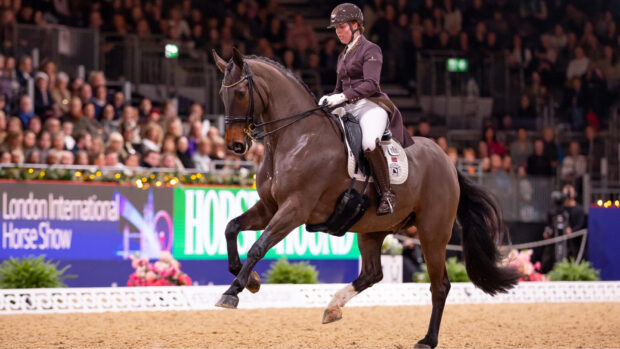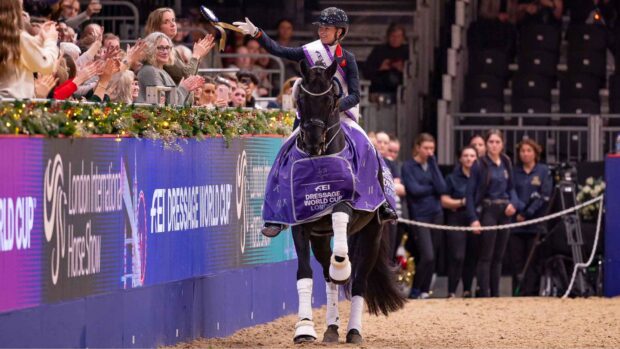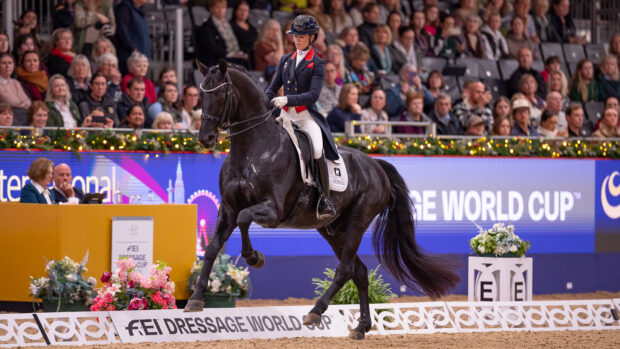Freestyle dressage to music (kür) is a great way to spice up your regular dressage schooling and can be enjoyed by riders at every level. It offers new challenges and rewards, both at home and at competitions.
“Choreographing dressage to music adds a new dimension to your training, because it forces you to try to combine movements within your horse’s level of ability that are interesting to watch and complement the mood of the music,” explains international dressage rider and trainer Christopher Bartle.
The music adds an extra dimension and brings a more personalised and creative element to any kind of riding, plus it’s a fun way to spice up your daily schooling routine.
“Musical freestyles can help in the training of a horse and they make you ride better by forcing you to think about rhythm,” Mr Bartle explains.
In competition, freestyles are awarded technical and artistic marks. The maximum number of marks available in each category is the same, and the total points from each determine the winner. In the case of a tie, the person with the higher artistic score wins.
As with regular dressage tests, there are certain movements that are required at each level of freestyle. The rider is responsible for including all the compulsory movements. The judge may award a score of zero for omitted movements.
“There are no shortcuts when it comes to the technical requirements of the freestyle,” says Libby Anderson, co-author of Dancing With Your Horse. “While good music and choreography can accentuate a test, they cannot cover up poor basic training.”
Artistic marks are divided into five categories:
- Rhythm, energy, and elasticity
- Harmony between rider and horse
- Choreography and use of the arena
- Degree of difficulty and well-calculated risks
- Music and interpretation of the music
Before considering your music you need to know the number of steps per minute that your horse takes in all three gaits. It’s important to ensure your music matches your horse’s paces, so that you’re neither struggling to catch up, nor holding your horse back.
Leigh Ann Hazel-Groux, co-author of Dancing With Your Horse, says that it makes little difference whether you select your music first, then plan your choreography, or the other way around. “Whichever method you use, there’s plenty to do and you’ll probably end up working on both parts independently, as well as together,” she says.
Chris Bartle recommends that you begin by finding music that suits your horse’s tempo, rhythm and type. He suggests listening to the music first, and then designing your test around it, letting the composition suggest the movements.
As in standard dressage tests, the higher the level, the more difficult the required movements are. Riders may incorporate non-compulsory movements of a lower level in the test, but you will be penalised for incorporating movements that are more difficult than those for the level at which you are competing.
One of the most challenging aspects of putting together a kür is choreographing the horse’s movements to the music, but there are now specialist companies that can supply music specifically for the purposes of equine choreography. However, if you are editing and cutting your own musical selections, remember that the transitions between songs need to be as seamless as possible for competition.
Leigh Ann Hazel-Groux recommends that people think of their rides as three-act plays, with an explosive beginning, a stimulating middle and a strong ending. The entrance should be bold and attention grabbing, while the opening moves need to showcase your horse’s strengths and best movements. Avoid any movements that you and your horse find difficult.
You also need to be aware of the duration of your test. For example, all British Dressage tests from novice to intermediare I must be between four-and-a-half and five minutes long. The mandatory halts on the centre line at the beginning and end of the test are used to time it.
Also, only 20 seconds of the music is allowed to run before you enter the arena, and the music must end at the final halt on the centre line. Check with British Dressage for more information on the specific amount of time you will have, as it varies according to level.
Once you’ve finished with the choreography, the chances are that you’ll have to tweak the movements or the music to make sure everything flows properly. An unaffiliated dressage show is an ideal place to debut your first musical freestyle, and these shows provide a great way to get judges’ feedback.
NB: Anyone competing in freestyle dressage should contact BD (tel: 02476 698830) to ensure they are complying with the necessary licensing agreements associated with the public use of music.



